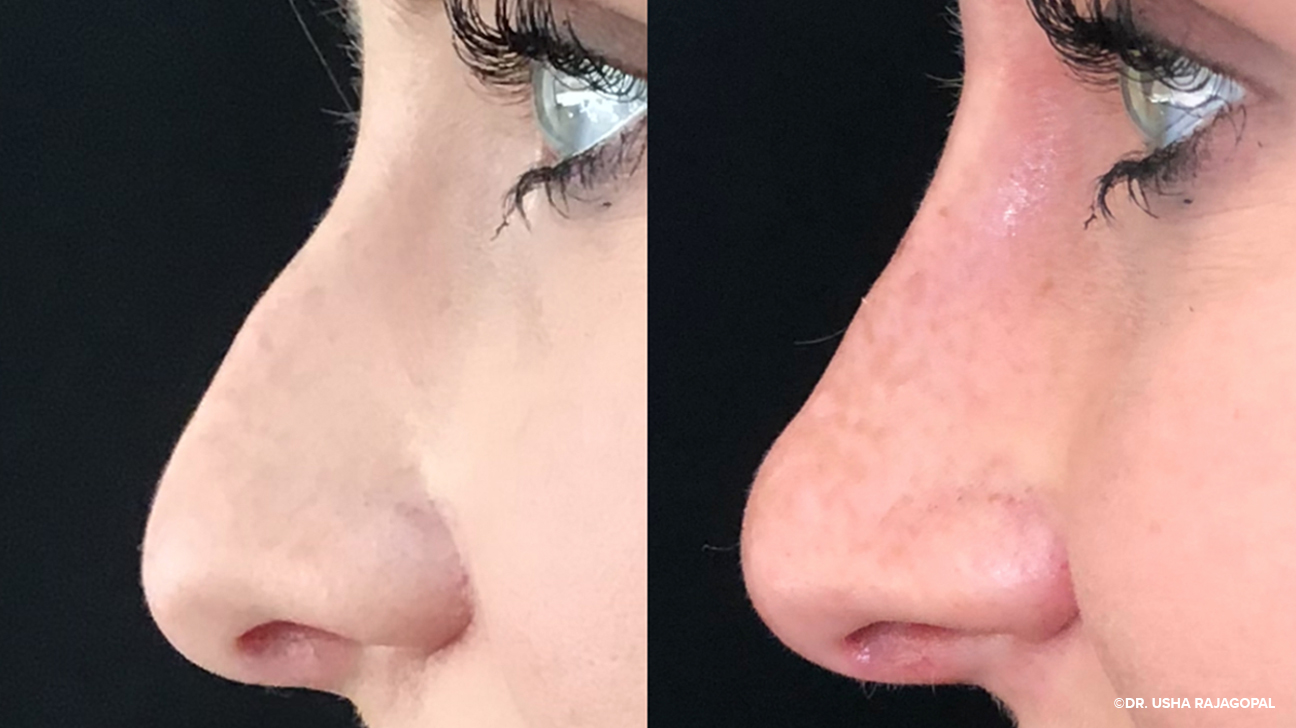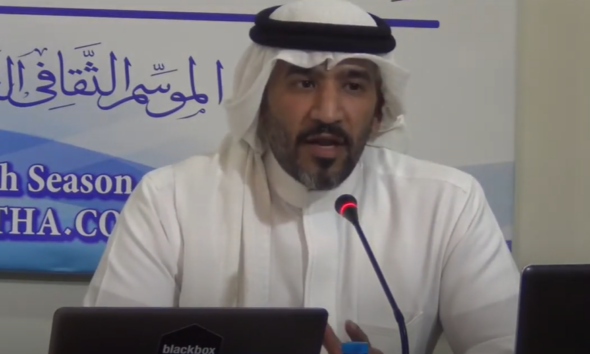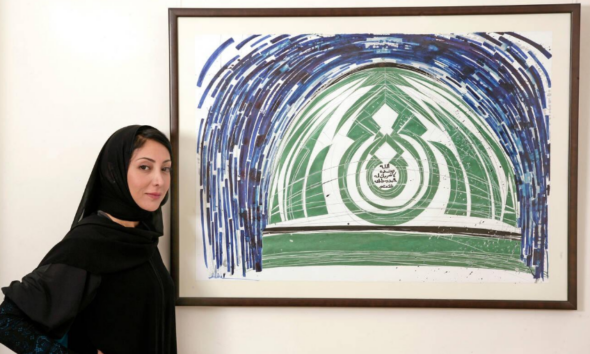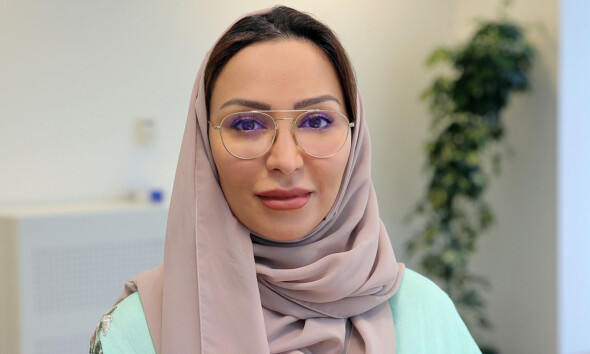Home » Business » Non-Surgical Rhinoplasty: All You Need to Know About
Business
Non-Surgical Rhinoplasty: All You Need to Know About
Published
3 years agoon
By
Huda Az
Non-surgical rhinoplasty is a procedure also called liquid rhinoplasty or lunchtime rhinoplasty (other nicknames available too).
The procedure in itself consists of injecting a filler, formed of hyaluronic acid, underneath your skin to temporarily change the structure of your nose.
It is an outpatient procedure, making it far more convenient than surgical alternatives. A trained provider can do the procedure in 15 minutes or less. You can be back at work the same day with the most common side effect being redness. Nonsurgical rhinoplasty is much less expensive than a surgical rhinoplasty with a cost as low as 1/10 the cost of surgical rhinoplasty in London. Results can last for up to 18 months
You can visit Dr Wafaa Al-Muhib and know all about it
So let’s go into further details…Shall we?
You may have heard of nonsurgical rhinoplasty referred to by its nicknames “liquid nose job” or “15-minute nose job.”
This procedure is a dermal filler procedure that changes the shape of your nose for up to 18 months depending on the type of filler used and your body’s metabolism
It is a quick procedure and is ideal for people who are looking to smooth out bumps in their nose or make it look less angular but who aren’t ready for a permanent solution, or are worried about the risks, recovery time and costs involved in a surgical rhinoplasty.
What ingredients are used in Non-surgical Rhinoplasty?
By using dermal filler, your Aesthetic practitioner can change the shape of your nose. He or she will use a dermal filler with high G prime properties and inject it underneath your skin in the areas where you wish to create smoother lines or volume. The volume created will then disguise any hump or deviation your nose might have. The filler then settles into where it’s injected in your deeper skin layers and holds its shape changing the look of your nose for anywhere from 6 months to 2 years, depending on your skin, your desired results, and the ingredient used
Sometimes neuro-modulation may be required to inhibit the nose depression and elevate the tip by using botulinum toxin to inhibit the action of a muscle called Depressor septi nasi which tends to bring the tip of the nose downward especially when you smile or talk. However the necessity of this step will be determined after consultation and assessment.
What’s the procedure like?
The procedure is fairly simple, especially when compared to surgical rhinoplasty. A non-surgical rhinoplasty targets the bridge, tip, and sides of your nose. Fillers are injected around different parts of your nose to modify its shape. After a consultation where you discuss your desired results, your doctor will have you lie down with your face tilted up. You will have a topical anaesthetic applied to your nose and the surrounding area so you won’t feel pain from the needle.
After the anaesthetic takes effect, your doctor will inject the filler into the area around your nose and maybe the bridge of your nose itself. You might feel a slight pinching or pressure while this is done. Usually, three areas are injected:
A- The radix of the nose which is the depression at the root of the nose.
B- The base of the columella of the nose which is the tissue that connects the nasal tip to the nasal base and separates the nares. This is an essential step to provide support to the nasal tip when lift is a goal
C- The tip of the nose to lift the tip and create sometimes the Tinkerbell effect a lot of patients are looking for.
The whole process can take from 15 minutes to 45 minutes.
Risks and side effects
As with any procedure or treatment, Non-Surgical Rhinoplasty has risks and side effects. For most people, the only side effect of liquid rhinoplasty they’ll see is a little redness and sensitivity in the area of the injection in the day or two after the procedure.
Other possible side effects include:
- bruising at the site of the injection
- swelling
- Pain and tenderness for up to a week
- Dryness of the overlying skin
These side effects are common with any type of procedure involving Dermal filler injections. However, The nose is a sensitive area. It’s filled with blood vessels and close to your eyes. That’s why liquid rhinoplasty is somewhat more complicated than other kinds of injectable filler procedures.
Possible serious complications include:
- Vascular occlusion when blood vessels are injected which will lead to tissue death
- vision loss
In a 2019 study of 150 people who got a nonsurgical nose job, less than 1% had a complication. These complications were made by unqualified Aesthetic providers mainly and were devastating to the patient. It is important to choose your practitioner carefully before committing to having a non-surgical rhinoplasty at a certain clinic. Be sure to ask your practitioner about:
- Qualifications (is it medical?)
- Training in non-surgical rhinoplasty.
- How many non-surgical rhinoplastes have they performed?
- How will they perform your procedure, How will they avoid complications?
They should be able to explain the procedure in detail including their safety standard.
- Are they trained to treat complications? let them explain to you how they treat complications if any.
- The best would be to find practitioners who have connections to casualties that can help in case of any emergency.
- Also, do they have a way to contact them in case of an emergency after the procedure?
It is also very important that your practitioner communicate with you during the procedure. This will put you at ease and will help him detect any potential risk.
Be sure to have a way of direct contact with your practitioner after you leave the clinic and speak to your practitioner right away if you experience:
- fever
- blurred vision
- redness or bruising that spreads and gets worse
- Hives or other symptoms of an allergic reaction like itching
Finally, Even with all the best qualifications, a complication can happen with the best surgeon, However, you need to know the risk with a well-trained and experienced practitioner is very very low.
What to expect after treatment:
After liquid rhinoplasty, you may see pain, swelling, and redness where your injection was inserted. Within an hour or two, the injection should start to settle. The redness should start to subside, and you’ll be able to better see your desired results.
Bring an ice pack to use after your appointment. Ask your doctor if it’s OK to use it to minimize redness and inflammation.
Results should be fully visible within a week or two. Redness or bruising should completely subside by then.
As far as downtime, people who swear by liquid rhinoplasty love that there’s practically no recovery time. You can be back to work and your normal activities the very same day. You might be asked to not wear heavy eyeglasses for the first 2-4 weeks till the filler completely settles into your tissues.
How much does it cost?
Non-surgical rhinoplasty is a cosmetic procedure. Costs vary depending on what kind of filler you choose, the provider you choose, and how many injections you need.
In the Clinic, you should receive a detailed consultation and cost breakdown from your provider after your consultation so you know what to expect.
Generally, you can expect to pay around £350 to £750 in the UK, depending on the clinic location and the Practitioner.
Before and after photos of Non-surgical Rhinoplasty
Non-surgical rhinoplasty results can be quite impressive and emotionally life-changing. In less than 15 min, a complexity can turn into a blessing and smiles sometimes even joyful tears.
Shall I go for Nonsurgical rhinoplasty or Surgical rhinoplasty?
The answer depends on many factors. A comparison of the pros and cons would be the most beneficial.
Non-surgical rhinoplasty is for you if you’re looking to experiment with how modifications to your nose might look, or if you’re looking to tweak your nose in small ways to change your appearance. If your nose is very complex with more than a bump and a tip droop, you might want to consider traditional rhinoplasty instead.
Pros of nonsurgical rhinoplasty
Nonsurgical rhinoplasty allows you to avoid going under general anaesthesia. You’ll have a quick recovery. After this procedure, you can return to work and your regular activities within the same day (except heavy exercise, to be avoided in the first 48 hours). Results aren’t permanent, so if you’re not pleased with how it looks, it’s just a matter of time before the fillers metabolize or it can be dissolved using hyaluronidase. The cost of nonsurgical rhinoplasty is much lower than a traditional rhinoplasty.
Cons of nonsurgical rhinoplasty
If you’re looking for a dramatic, permanent change to your appearance, this procedure is not for you. There are side effects, such as bruising and swelling. There’s the possibility that a misplaced needle could result in visible bleeding under your skin or damage to your vision.
Pros of Surgical rhinoplasty
The results of traditional rhinoplasty are bold and permanent. But non-reversible!! You won’t need another procedure to “re-up” or “refresh” the results in a few months or years. if you have associated related medical issues, such as breathing difficulties, surgical rhinoplasty will be able to treat both medically and cosmetically.
Cons of traditional rhinoplasty
If you don’t like the result, there’s not much else you can do besides wait for it to heal and then get another rhinoplasty. The typical practice is to perform this process in a hospital setting while employing general anaesthesia. Risks of complications like infection are much higher. It costs significantly more than nonsurgical rhinoplasty (with costs starting at 10 times more than non-surgical rhinoplasty).
You took the decision and want to take the plunge. How to find a provider?
When considering nonsurgical rhinoplasty, you don’t want to look for the cheapest provider who may not have experience with this specific procedure.
You want to look for qualified, trained, certified fully insured providers. This can be found on our page Glowday
You may like

Ahmed Al-Badr the Saudi Businessman

Saudi Designers Ladies’ Role in the Fashion Revival & Vision 2030

Lina Gazzaz: A Saudi Artist Who Painted History in Modern Colours!

Terrorism Specialist Dr. Shimaa Samir: Multipolarity is Undermining Nuclear Deterrence, and it is Possible to Tame Extremist Ideology!

Daniah Orkoubi: A Saudi Entrepreneur and Technological Pioneer

